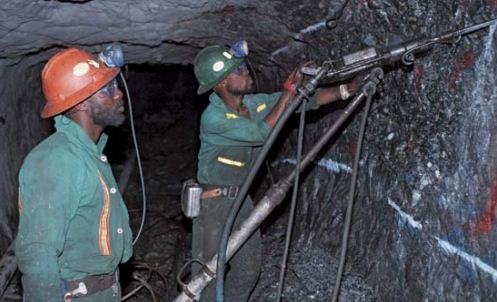Mining companies need to enforce safety measures for mine workers to curb respiratory diseases such as silicosis, a type of lung disease caused by breathing in tiny bits of silica, a common mineral found in sand, quartz and many other types of rock, the Ministry of Public Service and Labour has stressed. Silicosis mainly affects workers exposed to silica dust in jobs such as construction and mining.
The ministry’s call for mine workers’ safety came during the celebration of the Occupational Safety and Health World Day on May 16.
The event served as a platform to underscore the critical importance of prioritizing safety measures in every workplace and addressing the challenges hampering workplace safety and employee welfare.
Jeannette Bayisenge, the Minister of Public Service and Labour, said: “There are requirements that employers and employees of mining companies must comply with, including all the necessities of employees to be protected from all the problems that could lead to any kind of accidents. We are monitoring to make sure that the workforce has insurance coverage.
“Ensuring the safety of our workers is not just a duty; it’s a necessity for our nation’s growth. By empowering dedicated committees and investing in comprehensive training, we’re not just protecting lives, but also securing the future of our workforce and country.”
To ensure comprehensive safety in workplaces, she said, dedicated committees have been appointed with the crucial task of overseeing the well-being of workers.
Findings on silicosis
During the ceremony, Dr Evariste Ntaganda, an official from the cardiovascular disease department at Rwanda Biomedical Centre (RBC), unveiled findings from a comprehensive survey conducted to assess safety and health across various workplaces. He said that out of 1, 030 miners screened in Kayonza District, 95 of them – equivalent to 9.2% – had silicosis.
He said 8% of them who have silicosis also had tuberculosis. About 117 people, or 11.4%, who had silicosis were suffering from lung dysfunction.
He said 25 per cent of the patients who go to Kayonza District Hospital for internal medicine treatment are miners.
“They come for respiratory disease treatment. In revealing these findings, we’re confronted with a stark reality; our workforce is grappling with a multitude of health concerns, from chronic diseases to mental health issues. We must take decisive action to address these challenges, both within the workplace and beyond, to ensure the health and productivity of our workforce,” he said.
Bayisenge reiterated that the study shows the seriousness of the problem.
“It will help the relevant institutions to take measures,” she said
The discussions also delved into the significant impact of non-communicable diseases (NCDs) on workers’ productivity and overall national development.
Specialized committees were appointed
With occupational injuries and diseases reported, she emphasized the need for proactive measures to mitigate risks.
To address these challenges, she said, specialized committees were appointed to oversee workers’ safety and well-being. Comprising individuals from different companies, the committees underwent rigorous training to enhance their understanding of safety protocols and risk management strategies.
Collaboration between governmental bodies including the Ministry of Public Services and Labour and the Ministry of Health was highlighted as essential for effective implementation of workers’ safety initiatives. It was stressed that creating safe working environments and providing necessary safety equipment is not only a legal obligation but also a moral imperative for employers.
Individual workers were encouraged to take an active role in ensuring their safety by adhering to safety guidelines and utilizing provided safety equipment.
Bayisenge emphasized the importance of continued training and awareness programmes to reach a wider audience and ensure the well-being of workers across all sectors.
Officials also acknowledged that tackling workplace safety and health issues requires a collective effort from employers, employees, and regulatory bodies.

